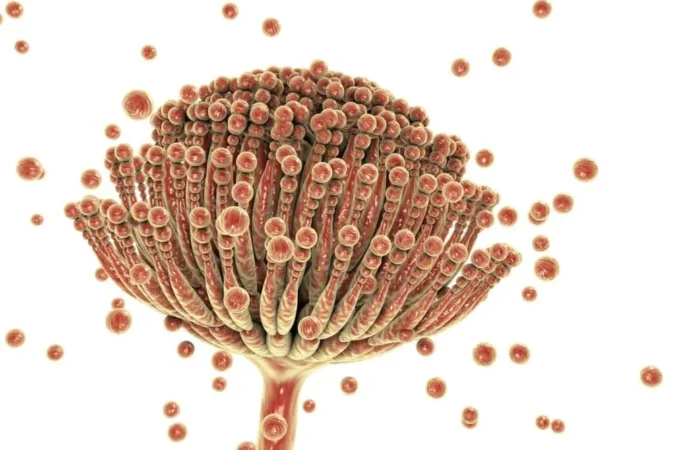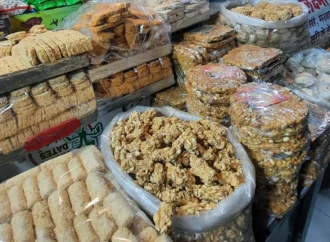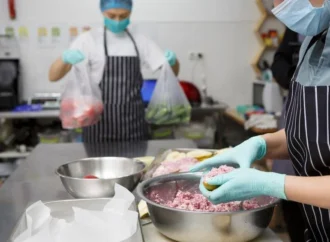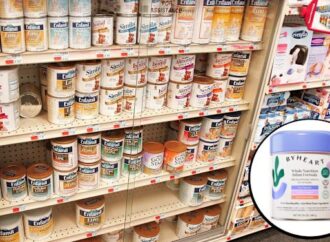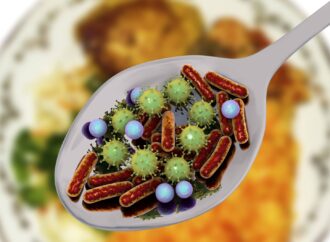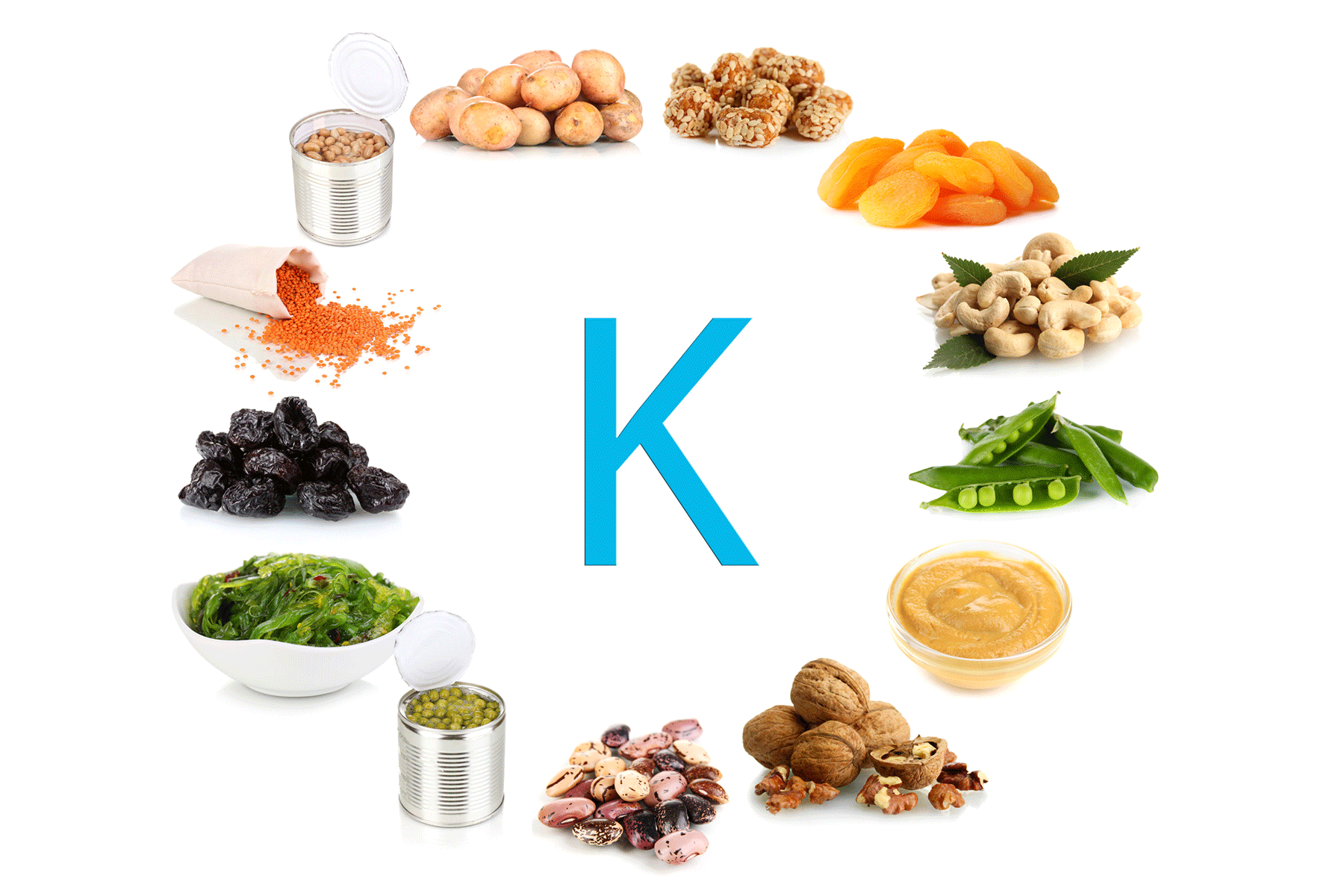Mycotoxins are toxic compounds that certain moulds and fungi produce, contaminating various foods such as grains, dried beans, dried fruits, and coffee. These toxins pose significant concerns for human health and can also affect livestock through contaminated feed. When individuals ingest mycotoxins—either directly from contaminated food or indirectly through animal products (like milk from cows that consumed mycotoxin-infected corn)—they may experience serious health issues.
Consumers often cannot control the presence of mycotoxins in their food. These toxins typically arise during harvest or post-harvest stages, particularly in warm, damp, and humid conditions. Mycotoxins remain chemically stable, allowing them to survive food processing methods such as drying and cooking.
According to the Food and Agriculture Organization (FAO), mycotoxins contaminate approximately 25% of the global food supply annually, posing significant health risks.
Common Types of Mycotoxins
While researchers have identified several hundred mycotoxins, the following are the most commonly observed in food supplies:
- Aflatoxins: These highly toxic mycotoxins arise from moulds that grow on soil and decaying vegetation. You can commonly find them in cereals, oilseeds, spices, and tree nuts. Aflatoxins can cause acute poisoning (aflatoxicosis), primarily affecting the liver.
- Ochratoxin A: Produced by species of Aspergillus and Penicillium, this mycotoxin contaminates a range of food items, including cereals, coffee beans, and wine. It can cause kidney damage and may affect fetal development and immune system function.
- Patulin: Typically found in rotting apples and other mouldy fruits, patulin can lead to gastrointestinal disturbances in humans, while animals may experience liver, spleen, and kidney damage.
- Fumonisins: Commonly associated with corn and some other grains, these mycotoxins can cause various illnesses in animals, particularly affecting their brain, heart, liver, and kidneys.
- Zearalenone: Produced by Fusarium moulds, this mycotoxin often contaminates grains and can cause reproductive issues in both humans and animals.
- Nivalenol and Deoxynivalenol (DON): These mycotoxins link to a range of health issues, including gastrointestinal problems, immune deficiencies, and potential reproductive issues.
Health Effects of Mycotoxin Exposure
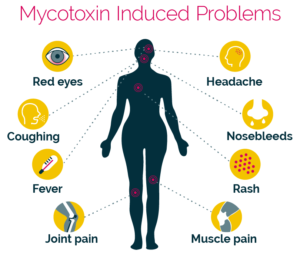
Mycotoxin exposure can lead to mycotoxicosis, manifesting as either acute or chronic health issues. Symptoms of exposure include:
- Allergic Reactions: Some individuals may experience coughing, sneezing, itchy eyes, and skin rashes.
- Respiratory Infections: Inhaling mycotoxins can irritate the lungs, making exposure particularly dangerous for children, the elderly, and immunocompromised individuals.
- Cancer: Certain mycotoxins, particularly aflatoxins, have links to increased risks of liver and kidney cancers.
- Mental Health Problems: Mycotoxins may contribute to brain inflammation, leading to issues like depression and anxiety.
- Gastrointestinal Issues: Symptoms can include nausea, vomiting, and diarrhoea.
Other potential effects of mycotoxin exposure include fatigue, headaches, irritability, difficulty concentrating, memory loss, skin irritation, and sore throat.
Common Sources of Mycotoxins
Mycotoxins can contaminate a wide variety of foods, including:
- Grains (corn, wheat, barley, oats)
- Nuts
- Spices
- Fruits
- Vegetables
- Coffee beans
Some dietary supplements may also contain mycotoxins due to less stringent regulations compared to foods and drugs.
How Mycotoxins Spread
Mycotoxins generally arise under specific conditions, including:
- Environmental factors (temperature, humidity)
- Poor harvesting practices
- Exposure during transportation and processing
Warmer climates and global warming may contribute to the spread of mycotoxins, especially in low-income countries where staple crops are affected. Wealthier nations implement more stringent safety measures to mitigate these risks.
Coffee, in particular, is known for its susceptibility to mycotoxin contamination. However, proper storage, transport, and roasting processes can significantly reduce mycotoxin levels.
Prevention Strategies
Preventing mycotoxin exposure is crucial for maintaining food safety. Here are some effective strategies:
- Inspect Foods: Regularly check whole grains, dried fruits, and nuts for signs of mould or decay.
- Store Properly: Keep foods in dry, clean environments free from pests and excessive heat.
- Avoid Damaged Goods: Do not consume or store damaged grains.
- Buy Fresh: Purchase dried goods that are fresh and well-packaged.
- Diversify Your Diet: Eating a wide variety of foods can help reduce the risk of exposure to any one type of mycotoxin.
Conclusion
Mycotoxins pose significant health risks, contaminating a substantial portion of the global food supply. Consumers must understand their sources and potential health effects. To mitigate exposure, prioritize proper food storage, inspect products for mould, and choose fresh, high-quality items. Implementing these preventive measures can significantly reduce the risk of mycotoxin-related health issues, promoting safer eating practices and better overall health.
 Food Manifest
Food Manifest 